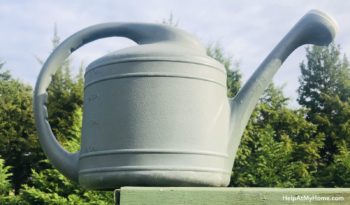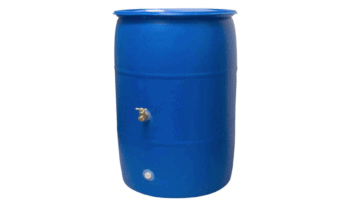Gardening is one of the most healthy, calming, and rewarding things you can do with a patch of dirt. It’s mostly about the elbow grease but you’ll need some equipment as well.
This list will go through garden specific items, not the general backyard things that you might find to be helpful, like a hose or fencing.
Garden Size Matters
The number one factor here is going to be the size of your garden — if you have a 50′ x 50′ plot it’s going to be a big difference in equipment than nice set of window boxes or an arbor on the side of your home. All gardens are great, just keep in mind, the bigger the garden, the most involved the tools.
Starter Kit
This are things that basically every garden will require. The specific model or size mights change based on your requirements, but the fundamentals will remain. These are tools that are useful for every garden, and most gardens will have at least one.
Trowel
This is a small, hand shovel that is useful for digging holes for plants, creating rows, light weeding, and all sort of other general tasks. This is a jack-of-all trades, but a master of none.
Watering Can
Get the right one since this will probably be the tool you use most in your garden. Look for something that is big enough to be effective but not too big to handle. Focus on design and comfort, not fancy materials or shiny copper.
Ruler/Planting Stick
Most of the seeds you work with will need to be planted at a set depth and a set distance from each other. While you might be able to eyeball these measurements, most of us can’t. A planting stick helps quickly determine the depth before you put that seed in the dirt.
Markers
While it’s nice to envision the perfectly ordered garden with rule-straight rows and complete order, that’s rarely how us mortals do it. Markers will let you know where to walk, what’s planted where, and where rows end. Many people like to use paint sticks, but metal hoops work well also.
Gardening Gloves
Gardening is tough on the hands and a pair of good gloves will save you from endless scratches, nicks, cuts, and splinters. You don’t need special gloves, just ones that can be cleaned easily and have enough grip to hold onto a shovel or wet watering can.
Advanced Kit
So you have some gardening under your belt and you are making a big time commitment this spring. What gear do you need?
Garden Spade
A shovel might be the first tool you think of when it comes to gardening, but you don’t actually need to do that much digging in an established garden. A good spade will get the job done for years and, don’t worry, you don’t need 10 different ones.
A garden spade is typically a short shovel, with a square-off shovel, a “D” handle, and a large foot pad for pushing it into the soil. Garden shovels are for accuracy, where a digging shovel (rounded shovel, long handle, no “D” end on the handle) is for moving large quantities of dirt.
Rain Barrel
Plants need a lot of water, and if you didn’t route a hose end to your garden that’s a lot of trips back and forth with the hose, or worse yet, with a full watering can. You can save yourself some trouble by planing a 60 gallon water jug, usually known as a rain barrel, at the entrance to your garden.
Alternatively you can put one in the obvious spot, under a gutter drain, and get your water from the rain. (Just make sure rain collection is legal in your area!)
Metal Hoe
A hoe is useful for moving dirty, creating rows, creating mounds, and even weeding. Not everyone needs one, but once you learn how to use it properly they can be a pretty handy tool to have around.
Transplanter
A transplanter is a narrow garden trowel with a sharp edge, specifically designed to dig up plants and move them from one place to another. Digging up a ton of begonias bulbs at the end of the season? You’ll want a transplanter to get the job done.
Pruner
Once the seasons comes to an end you’ll be doing some pruning. You can probably get away with some kitchen shears, but woody shoots and tougher plants need something stronger. That pair of super-scissors is called a pruner.
Not Joking Around
Drip Hose
If you have a big garden or you have plants that need water with serious regularity thanks to sun or local climate than a drip hose is the way to go. This is a hose with many tiny perforations that drip water onto your prize-winning tomatoes, blueberries or whatever else you are serious about growing.
A drip hose isn’t a solution in and of itself, it also needs a hose splitter, hose joiners, and some other parts. A timer is useful as well, so you can automate the watering process.
Metal Rake
A metal rake, or gardening rake is the right tool for turning small amounts of soil, breaking up the surface of soil, and spreading mulch, manure, etc. They are heavy and slightly pointy, plus they are the rakes that flip up and whack you in the nose (cartoon style) if you leave them on the ground so not every gardener invests in them.
Bedding Fork
A bedding fork is essentially a pitch fork, but with more tines. They are used for turning over soil and breaking up the surface of your planting ground at start of the season. A bedding fork looks much less menacing than a pitch fork, but you still feel pretty cool while using it.
Full-sized Shovel
While a gardening shovel is going to be most of what you need when it comes to moving dirt and also miscellaneous tasks, like grass edging, there is no replacement for a full shovel. You’ll know it’s a serious dirt mover if it has a long handle, no end on the handle, a slightly pointed tip, and a generous cup-shape for holding dirt.
Wheel Barrow
A wheel barrow is basically the ultimate tool for moving things around your yard. The clunky, dented metal barrows of yesterday have been largely replaced with two-wheel, poly barrows as well as sleek yard carts so don’t think you



